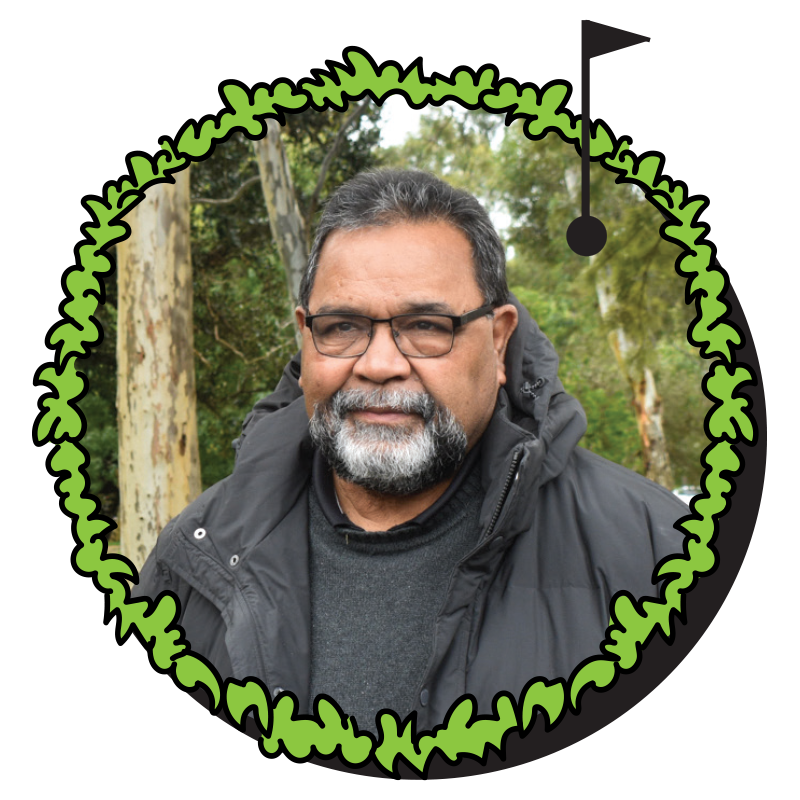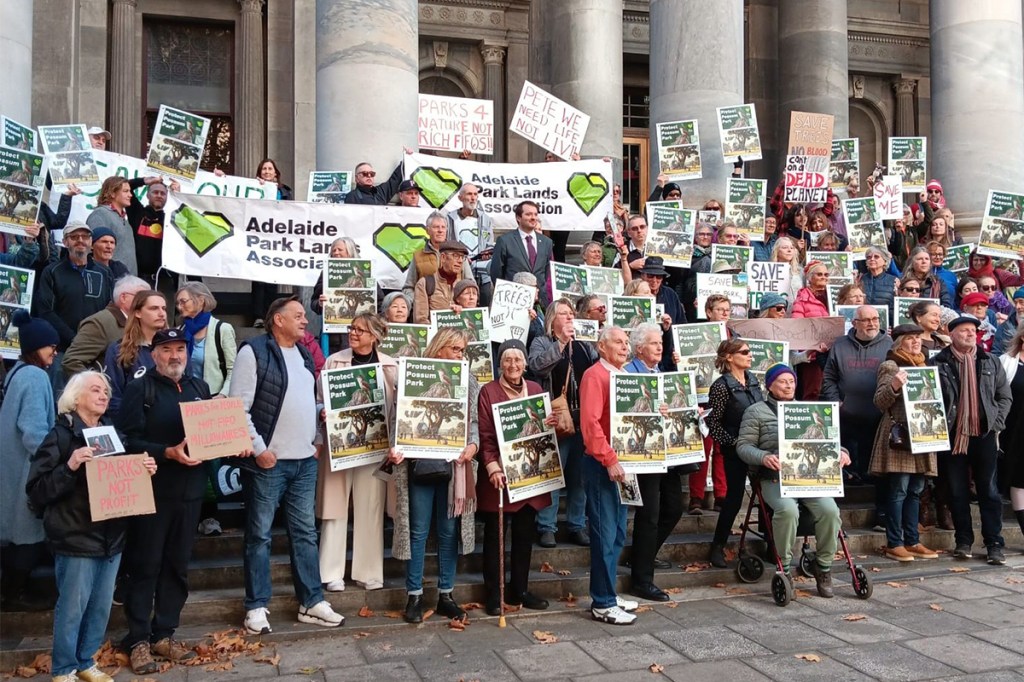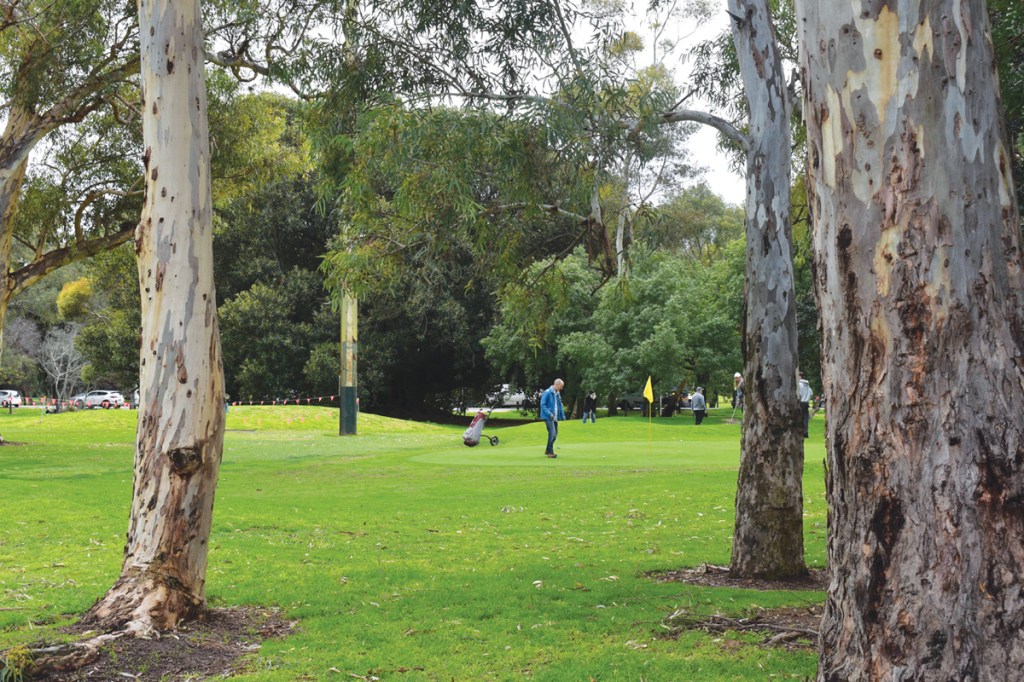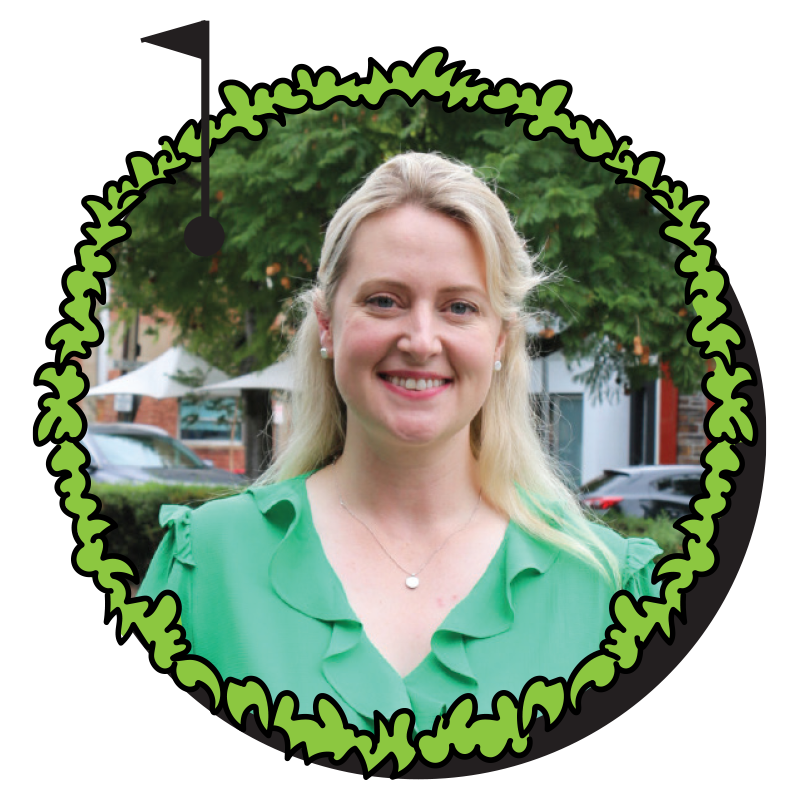State Government makes largest Adelaide park lands grab since 1837

Helen Karakulak explores how the North Adelaide Golf Course has become a flashpoint in the evergreen debate about balancing development with its preservation.
Adelaide is the only city in the world built inside a park.
It’s a fact Adelaide Park Lands Association member Shane Sody says at the start of all his weekly guided walking tours through Adelaide’s green belt.
The tours are one of the ways the association promote the park lands, which Shane says are “world first and world unique”.
“Not many people in Adelaide know that,” he says.
Over coffee, wearing his Park Lands Association hoodie, Shane says when the planning layout for Adelaide was put forward in 1837 by Colonel William Light, it was a turning point for public green space.
“It was the very first park that had been created for the public,” Shane says.

Before then, parks were owned by the King and Queen, and while nobility or royal guests were invited in, there was no right of entry.
“It was quite a radical thing to have an area of park, a designated part of the city… available for the entire public, and not owned by the King,” Shane says.
Pre-colonisation, the site was under the care of generations of Kaurna people, who continue to be custodians of the land.

Kaurna elder Tim Agius tells how traditional owners have an “obligation” to the park lands, and sections like Possum Park/Pirltawardli – the site of the North Adelaide Golf Course – have a long, and traumatic, history for the community.
You might like
“Our whole footprint has been impacted. Given the density of our population prior to colonisation, our people are buried everywhere,” he says.
In June, the state government passed special legislation to take control of the site’s 93 hectares across Pirltawardli and its surrounds. The legislation allows its redevelopment to bypass certain planning laws to make the course “world-class” so it can host international events like LIV Golf.
The move prompted backlash from community groups like the association, concerned with tree loss, building encroachment, privatisation, and transparency. At the time of writing, no plans for the new golf course site have been revealed.

The Kaurna community is concerned about the potential excavation and disturbance of ancestral remains at what Tim says is a “sacred site”.
These fears aren’t new. Tim raised similar concerns when early works started at the new Women’s and Children’s Hospital (nWCH) on Park 27.
He says the golf course site is the latest to spark anxiety among his community, after “traumatic” experiences of remains being moved from northern suburbs development Riverlea.
“For us, it’s more about digging up the ancestors that are currently laid there to rest and when it comes to that, I certainly made it very clear that I would not support the digging up of our ancestors anymore,” he says.
While the North Adelaide Public Golf Course Bill gives the development a free pass in planning consent, the government has to run a consultation and adhere to the Aboriginal Heritage Act 1988 concerning sites, objects or remains.
But Tim says the Act is a “very broad framework” and there’s a policy component that’s missing.
| Sponsored |
He says protocol that stipulates how sites, objects and remains are dealt with appropriately, with a truth-telling component and in partnership with the relevant Aboriginal groups, is required.
“There needs to be a framework underneath the Act, because at the moment, the minister has total control,” Tim says.
He says he understands the inevitability of these projects but works that impact Kaurna land must have cultural monitoring requirements.
“If there’s no monitoring, our people are going to get dug up, because that’s what constructions and buildings do,” he says.
Tim hopes with the spotlight on development in the park lands from community action groups, like the one Shane is a part of, truth-telling can occur.
“It’s going to happen,” he says. “Our community is saying no, we’re fed up, this has got to stop.”
Subscribe for updates
Shane wants to see a lever implemented to limit developers’ footprints on the park lands.
“The really important thing is, there is no end game. There is no point at which a state government is obliged to say, ‘oh, we’ve lost enough of the park lands now we won’t take any more’,” Shane says.
“That conversation never happens and everybody looks around and sees what remains and thinks, ‘oh, there’s a lot of it there, we could take a bit here, it wouldn’t matter’.”

The golf course is the latest on a long list of park lands developments the association has concerned itself with, including relocating police barracks, Adelaide Aquatic Centre, the new Women’s and Children’s Hospital and the plaza strip neighbouring the River Torrens and including Festival Tower one and two.
The Malinauskas government has a hand in each of these, and in its sitting term so far, has taken control of 96.04 hectares of park lands at the time of writing.
It’s the largest park lands grab, transferring care, control and management to a state government since 1837.

Adelaide MP Lucy Hood says that protecting the park lands is a “shared endeavour”.
“It is absolutely a shared endeavour, and that is why you have your Adelaide Park Lands Management Strategy towards 2036, because that is a combined effort between the state government, City of Adelaide, Kadaltilla and sure you have your advocacy groups as well,” she says.
“But perhaps we have to consider those other voices that probably don’t get heard as much, and they’re people like your sporting organisations that are using them every single day.
“I’m very passionate about saying whether you live five metres or 50 metres or 500 metres or five kilometres away from the park lands, they very much are a state asset and they are for everyone.”
Lucy says the golf course is an example of a development that will contribute to the city’s visitor economy and hospitality sector.
The golf course legislation specifies a differential price structure will apply, so tourists will pay more than locals to play the course, and the free pass through planning laws won’t apply to any accommodation on the site.
Lucy says the new Aquatic Centre is smaller than its predecessor, with 1000 square meters of open green space, improved walking and cycling links in the area.
The new WCH will also have 30,000 square metres of accessible park lands attached to the site that was previously inaccessible, she adds.
“When one of my parents was going through cancer treatment at the old Royal Adelaide Hospital when I was a teenager, the Botanic Gardens next door was a refuge for our family,” she says.
“That’s something I am very passionate about as part of the new Women’s and Children’s Hospital: that both patients and the public will have access to that 30,000 square meters of accessible parklands.”
When CityMag asks Shane about balancing park lands protection with a need for housing and infrastructure, Shane says “that argument supposes that there’s nowhere to put anything other than on park lands”.
This article first appeared in The Blueprint Edition of CityMag, released in spring of 2025.





